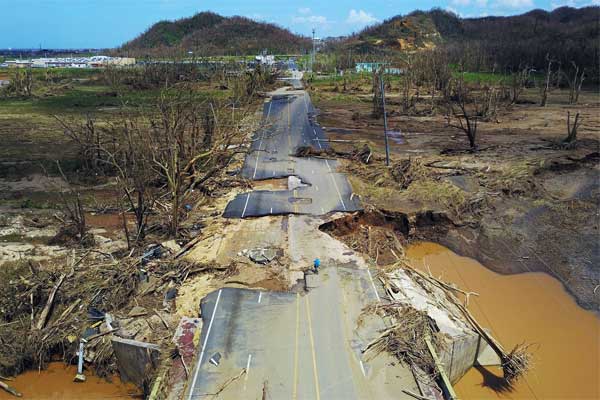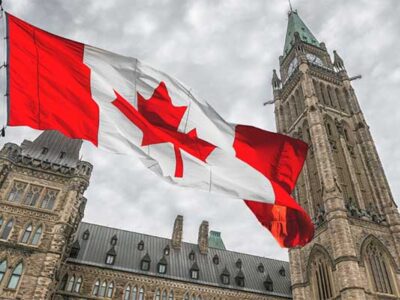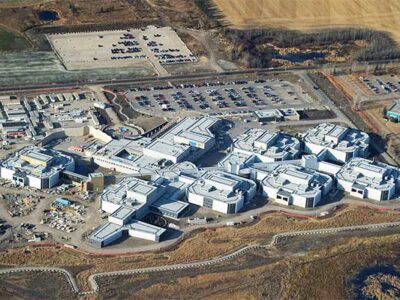In the early hours of Wednesday, September 20, 2017, a powerful Category 4 hurricane called Hurricane Maria, struck the island of Puerto Rico.
The hurricane made landfall with 150 mph winds, leaving a trail of catastrophic destruction in its aftermath. At least 16 people have been reported dead, and others left homeless.
The island lost most of its electric grid and communications as the heavy winds and rains washed away power lines, cell towers and eroded roads.
There is a lack of proper drinking water, and insufficient food supplies are available. With the destruction of communications lines, there is no cell service, making it impossible to contact or find loved ones.
Reports indicate that dozens of remote villages have been completely cut off from everything. Very little help is arriving, and till today, as I write this article, there’s still little to no power on most of the island.
Professionals in the North American solar industry, like myself, have wondered why a sun-rich Island such as Puerto Rico still has to rely on a centralized grid for power.
Being close to the equator, the island receives much more sun hours than most geographic locations in North America and utilizing solar power with a huge battery bank with a series of microgrids would have been beneficial; especially in the wake of Hurricane Maria.
Not that this would have prevented the devastation left by Hurricane Maria, but it might have made it easier to bring most of the island back online and much more quickly.
Queue in Elon Musk.
Billionaire and CEO of Tesla, Elon Musk, took to Twitter to say he can rebuild Puerto Rico’s power grid using solar technology.
“The Tesla team has [built solar grids] for many smaller islands around the world, but there is no scalability limit, so it can be done for Puerto Rico too,” Musk tweeted Thursday. “Such a decision would be in the hands of the PR govt, PUC, any commercial stakeholders and, most importantly, the people of PR.”
The Tesla team has done this for many smaller islands around the world, but there is no scalability limit, so it can be done for Puerto Rico too. Such a decision would be in the hands of the PR govt, PUC, any commercial stakeholders and, most importantly, the people of PR.
— Elon Musk (@elonmusk) October 5, 2017
The good thing is that his comment is being taken seriously by the storm-ravaged island’s top elected officials. Soon after his tweet, the Governor of Puerto Rico replied with an invitation to talk about making things happen.
@elonMusk Let’s talk. Do you want to show the world the power and scalability of your #TeslaTechnologies? PR could be that flagship project. https://t.co/McnHKwisqc
— Ricardo Rossello (@ricardorossello) October 6, 2017
We will wait and see what happens next.
Will Musk follow up with the Puerto Rican Governor; Ricardo Rossello’s offer to rebuild the island’s power grid?
If so, will it be the same type of project Tesla installed a few months back on Ta’u in American Samoa in Hawaii?
What will a Tesla-backed solar power project on the still-recovering island look like?
Update: October 6th, 2017
Apparently, something might actually happen between Tesla and Puerto Rico.
I would be happy to talk. Hopefully, Tesla can be helpful.
— Elon Musk (@elonmusk) October 6, 2017
Sounds good, I look forward to talking later today
— Elon Musk (@elonmusk) October 6, 2017
Update: October 9th, 2017
Gov. Rosselló said in an interview with USA TODAY that he had a 25-minute phone conversation Friday night with Musk where the two discussed relief efforts as well as Tesla playing a leading role.
“I told him because of the devastation, if there is a silver lining, we can start re-conceptualizing how we want to produce energy here in Puerto Rico and distribute it and do it in a more reliable fashion,” Rosselló said. “It was a very positive first step.”
Great initial conversation with @elonmusk tonight. Teams are now talking; exploring opportunities. Next steps soon to follow.
— Ricardo Rossello (@ricardorossello) October 7, 2017
Tesla Semi unveil now Nov 16. Diverting resources to fix Model 3 bottlenecks & increase battery production for Puerto Rico & other affected areas.
— Elon Musk (@elonmusk) October 6, 2017













Comments